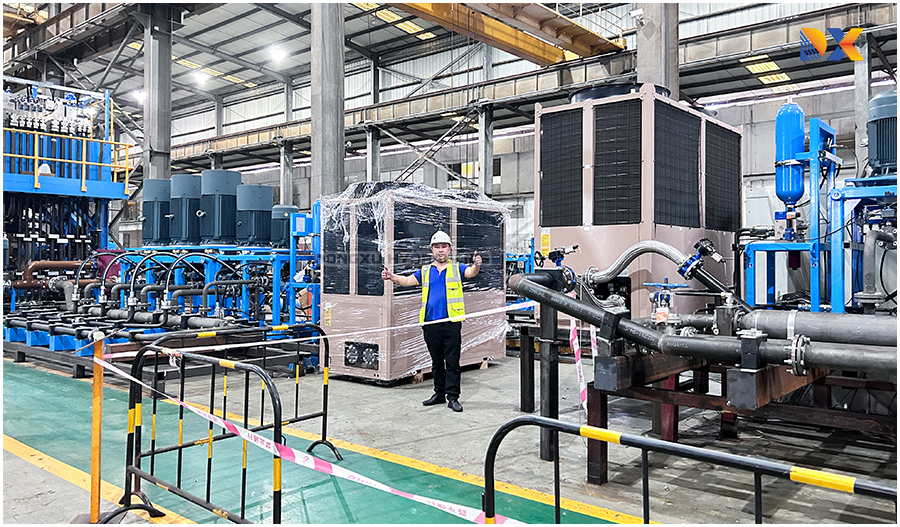Oil coolers generally employ two types of circulation cooling methods:
built-in oil pump circulation cooling and external oil pump circulation cooling.
Built-in Oil Pump Circulation Cooling:
In this method, the internal oil pump of the oil cooler draws oil from the oil tank and sends it through the oil piping into the plate evaporator of the oil cooler. Here, it undergoes heat exchange with the low-temperature, low-pressure liquid refrigerant to achieve the cooling effect. The cooled oil then returns to the oil tank, mixes, and is again drawn out by the oil pump for recirculation.
External Oil Pump Circulation Cooling: In this setup, the oil cooler does not have an internal oil pump. Instead, an external independent oil pump draws oil from the oil tank and sends it into the oil cooler system for cooling, then returns it to the oil tank for recirculation.
The circulating oil pump serves as the power source for oil circulation. It draws the oil from the oil tank and sends it into the oil cooler for heating or cooling as required.
Oil Circulation Loop:
User equipment fluid tank → Circulating oil pump → Oil cooler unit evaporator (heat exchange) → Back to user equipment fluid tank.
This cycle is repeated to achieve oil cooling and temperature stabilization in the equipment.

 GearboxesAgriculture/Products8
GearboxesAgriculture/Products8 GearboxesAgriculture/Products8
GearboxesAgriculture/Products8 GearboxesAgriculture/Products8
GearboxesAgriculture/Products8 GearboxesAgriculture/Products8
GearboxesAgriculture/Products8 GearboxesAgriculture/Products8
GearboxesAgriculture/Products8 GearboxesAgriculture/Products8
GearboxesAgriculture/Products8 GearboxesAgriculture/Products8
GearboxesAgriculture/Products8 GearboxesAgriculture/Products8
GearboxesAgriculture/Products8 GearboxesAgriculture/Products8
GearboxesAgriculture/Products8 GearboxesAgriculture/Products8
GearboxesAgriculture/Products8 GearboxesAgriculture/Products8
GearboxesAgriculture/Products8 GearboxesAgriculture/Products8
GearboxesAgriculture/Products8 GearboxesAgriculture/Products8
GearboxesAgriculture/Products8 GearboxesAgriculture/Products8
GearboxesAgriculture/Products8 GearboxesAgriculture/Products8
GearboxesAgriculture/Products8 GearboxesAgriculture/Products8
GearboxesAgriculture/Products8 GearboxesAgriculture/Products8
GearboxesAgriculture/Products8 GearboxesAgriculture/Products8
GearboxesAgriculture/Products8 GearboxesAgriculture/Products8
GearboxesAgriculture/Products8 GearboxesAgriculture/Products8
GearboxesAgriculture/Products8
